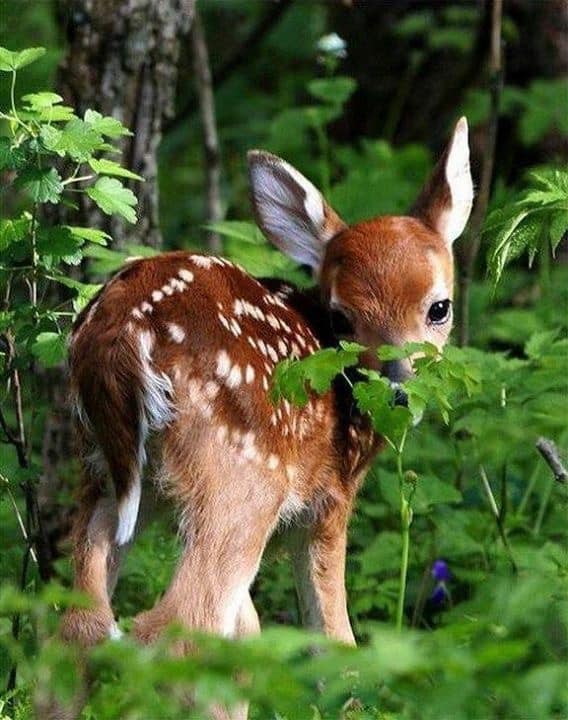14 Feb DEER FORESTS!!!
Many hunters appreciate Food plots and question how to effectively manage their hunting Forest properties. It is true that with proper management, you can improve and enhance the deer habitat and herd.

Managing your woodlands means several things. Food plots certainly add nutrition, but you must also consider, bedding, year around food sources, genetics, diversity, minerals, habitat, shelter, and population size of the deer herd.
Deer can destroy a forest. Routine browsing, feeding, and rubbing can eliminate healthy trees in a few seasons. You will be able to see a browse line that becomes too tall for deer to reach, especially along the forest’s edges. Not only are the trees damaged, but so is the entire ecosystem. Deer are just one member of the forest population. Overpopulation of deer means greater risk for diseases, reduced quality, fawn mortality, winter kill, and ultimately fewer deer. Migration to healthier areas will invite deer to move elsewhere.
During pre- pioneer times deer populations were 10-25 deer per square mile. Forests were the main habitat, with fewer edges and fields. A squirrel could jump from tree to tree from the east coast to the Mississippi River. Once trees began to be thinned, habitat improved, and the deer population grew until over harvesting of trees and deer occurred.
Maintaining a deer population of 15-25 deer per square mile will result in a healthy mix of trees and plants. Birds and small mammals are important when spreading seeds from one area to another. To repair/ restore a ruined forest, you need enough time to restore mature fruit bearing plants and trees. This may take 1-2 decades. Trees that produce food are the best choices. Oaks, Maples, ash, and seed producers are on the menu.
Approach your forest as a Steward, or Park Ranger. Create a plan and set goals. Many state forestry agencies will help for free.
Plan sustainable lumber harvests. This will allow more light onto the forest floor to support ground shrubs and food plants. Allow the forest products to pay for itself. Firewood sales can be huge.
Harvest deer to manage the size of your deer herd. Does can birth twins and triplets as they age. Also harvest cull deer to maintain a genetically healthy herd.
Do your homework. Understand the ecosystem that you are managing. Work with nature to create prime habitat and healthy critters.
Create a map of your property so you can visualize deer movements based on trees and feeding/bedding areas.
Caring for your property will increase the value of your land. You can also reap the rewards of great hunting, recreation, and wellness. Think about the forest’s growth in decades and not years. Consider adding some unique forage crops that twill make your habitat different. Sadly, ash beetles and Gypsy moths can target resident trees. Plant some trees that are resistant to future diseases. American Chestnuts once were the primary tree found in American Forests. When the Chestnut Blight arrived, they all but disappeared. You can now purchase blight resistant chestnut trees that can grow for 100 years and enhance your property. Chestnut lumber is also high quality and expensive. The nuts are wonderful for deer and other native critters.
Also look at planting White and Red Oaks near your hunting stands. Walnut trees produce nuts and future wood products. Persimmons along the forest’s edges are also a nice menu item. Deer also love unusual plants like poison Ivy, Greenbriar, and tuberous plants. Look at what and when is in season. Your goal is to create and manage a menu that the deer can survive on during all four seasons.
Make the trails and roads through your property food plots. These narrow, but long buffet lines can provide miles of clover, grasses, and other popular foods. Most of these plants are durable and survive some traffic from wheelers, animals, and vehicles.
Preserve some areas for bedding. Understand what a prime bedding area requires. Thick cover, visibility, air currents, sunlight, water, etc. Build a deer Band B and they will come. You want to keep the deer on your property, while inviting other deer.
If you do not have a water source on your land, make one that the deer are comfortable using. Growing great deer for your neighbor is not rewarding for you. This could mean enhancing a spring, adding a stock tank, or redirecting a water feature. In extreme cases, a well may be the answer.
Make natural deer blinds and stands. Different weapons mean different ranges and needs. Place the stands based upon the deer movements during hunting season. If you add tree stands, make them so they blend in well to the environment. Elevated box blinds are more expensive, but these blinds last forever. Once in place, they become part of the forest.
A perfect deer forest is like an inclusive vacation destination. Everything needed is there. A family of deer can thrive on just 3 acres if they have everything they need. This is why there are so many deer in suburban communities where homes are built on 5-10 acre lots.
A great forest is a reflection on the landowner. Healthy trees, diversity, and critters mean that they understand their forest business. Revenue created by the first products will reward their hard work.
Oh, and you can hunt close to home!
Montana Grant
For more Montana Grant, find him in a forest at www.montanagrantfishing.com.


